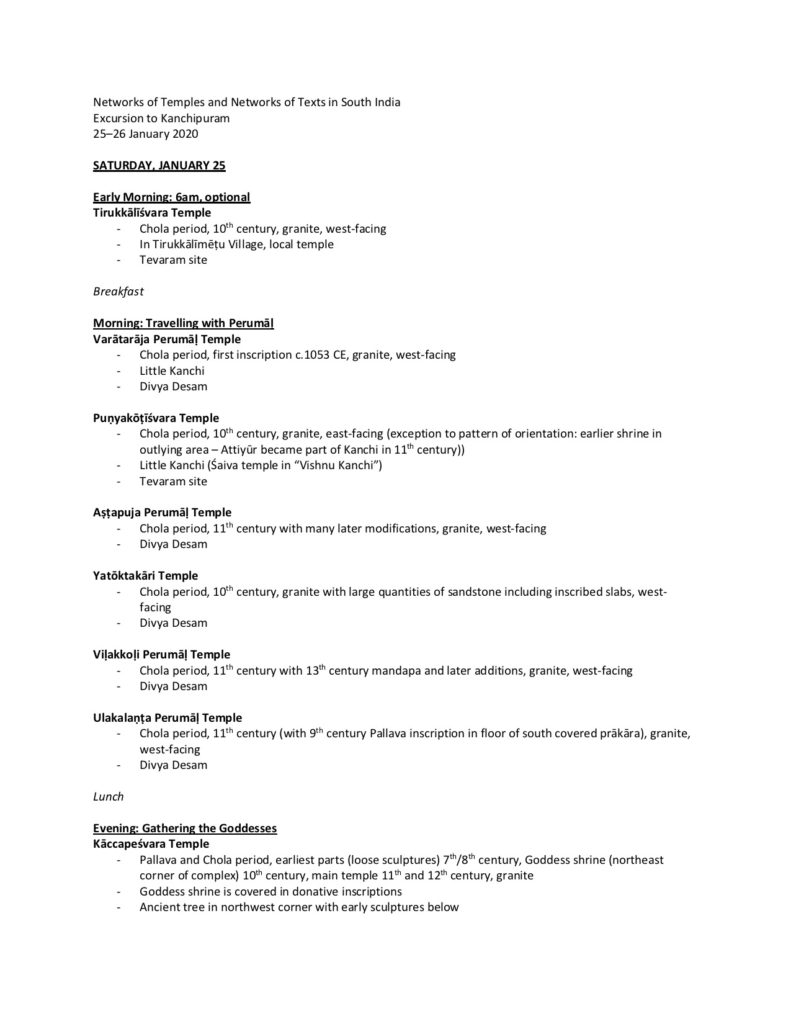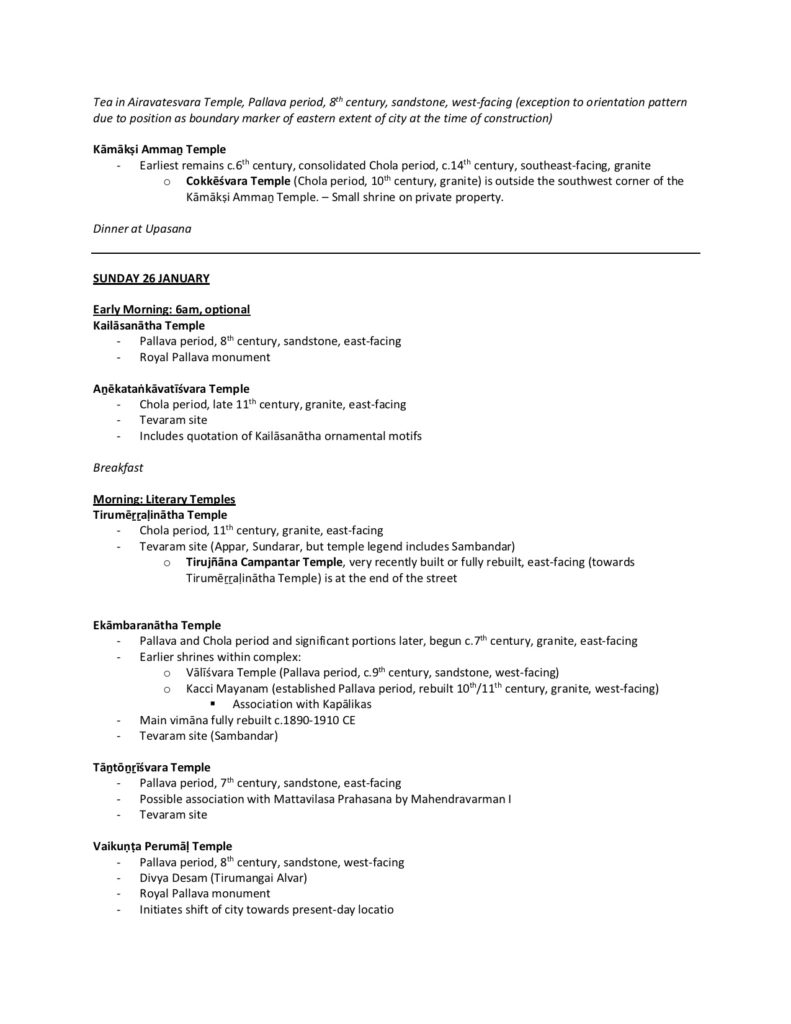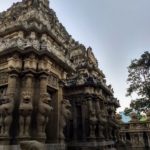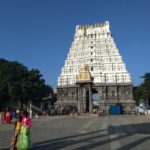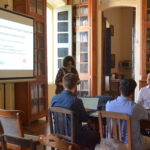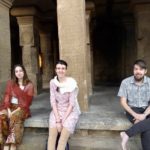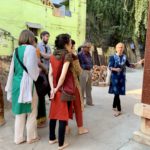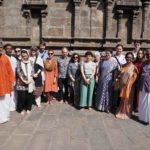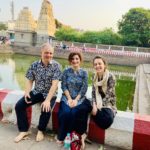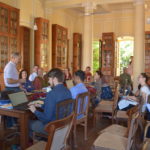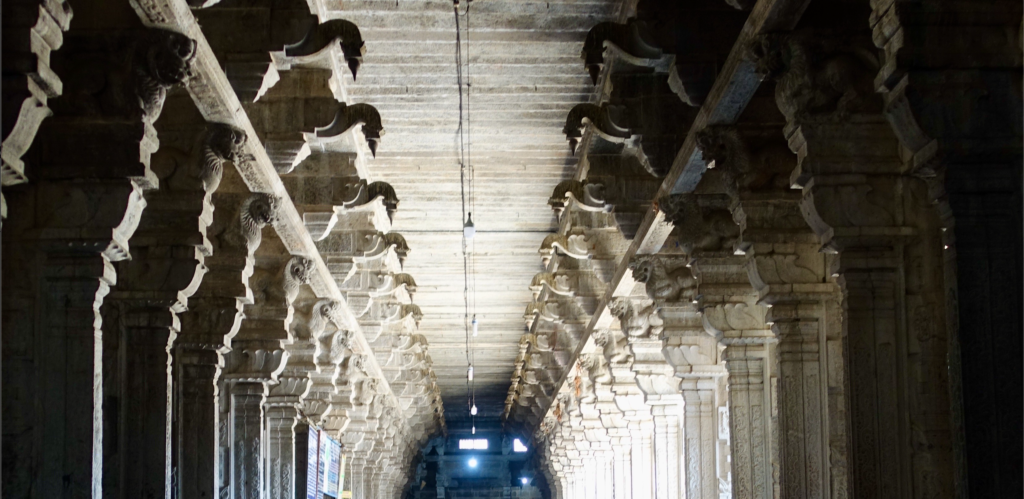
In January, Florinda de Simini along with other members of the Śivadharma project took part in the workshop “Networks of Temples and Networks of Texts in South India” organized by Ute Hüsken and Jonas Buchholz, both of the University of Heidelberg, in the framework of their DFG-funded project “Temple Networks in Early Modern South India.” The venue was the Pondicherry center of the École Française d’Extrême-Orient (EFEO), which is one of the institutional partners of the Śivadharma project. The focus of the workshop was on Kanchipuram, an ancient city in the Tondaimandalam region that hosts thousands of temples built over more than a millennium. The participants constituted a large and diverse group, including philologists, anthropologists, art historians and historians of religion. For a schedule of the workshop and a list of participants, read our previous post: https://shivadharmaproject.com/workshop-networks-of-temples-and-networks-of-texts-in-south-india/
From Monday to Friday (January 20-26), the group met daily in the library of the EFEO to discuss the presentations of the various participants, and read together relevant textual sources in Sanskrit and Tamil. The first day begun with Ute Hüsken’s presentation on her decades-long fieldwork on the ritual life of the Varatarāja Perumāḷ temple, an important site of Vaiṣṇava devotion in Tamil Nadu. She especially shared with the group her research on the worship of Atti Varatarāja, an image of the god Viṣṇu made of fig tree (atti) which is usually kept in a room underneath the temple tank. Once every 40 years, the temple adiministration empties the tank, takes out the image of Atti Varatarāja, and organizes a 48-day worship. In the afternoon, Emma Stein talked about the urban layout of Kanchipuram, locating the Varatarāja Perumāḷ temple within the dense network of Vaiṣṇava, Śaiva and Śakta temples in the city. Crispin Branfoot showed us how ancient temples, like the Varatarāja Perumāḷ and the other temples of Kanchipuram, were restored, enlarged and reconceptualized during the early modern and modern period, a moment in the history of South Indian art and architecture that is often overlooked.
The coexistence and interaction of different types of devotion was an important theme of the workshop, and on Tuesday our focus switched from the so-called “Viṣṇu Kanchi” to “Śiva Kanchi”, the part of Kanchipuram where most temples are dedicated to Śiva. Jonas Buchholz lead a reading session on the Tamil and Sankrit sources containing the myths connected to some of the Śiva temples of Kanchipuram, a theme directly connected with our work in the Śivadharma project. During this session, we read together selections from the Śaiva Kāñcīmāhātmya (in Sanskrit) and from the Kāñcippurāṇam (in Tamil). The Kāñcippurāṇam was particularly relevant for us. This work consists of two volumes, the first one written by famous Śaivasiddhānta scholar Civañāṉa Muṉivar (d. 1785), and second one by his disciple Kacciyappa Muṉivar. We know that Civañāṉa Muṉivar used the Civatarumōttaram in his Māpāṭiyam, a commentary on the Civañāṉapōtakam, a foundational text of the Tamil Śaivasiddhānta. Moreover, his disciple Kacciyappa Muṉivar included a summary of the entire Civatarumōttaram in his purāṇam on the holy site of Tiruttaṇi, the Taṇikaippurāṇam. This re-writing is the focus of Prof. K. Nachimuthu’s research in the Śivadharma project, and he read passages from Taṇikaippurāṇam during this workshop.
After a week of enriching discussions in Pondicherry, the whole group traveled to Kanchipuram to explore the different temples and the urban layout of the town. Emma Stein, in collaboration with Crispin Branfoot and Dominc Goodall, was our guide to the complex art and architecture of these sites spanning from the seventh to the twentieth century. You find below some photos, and the schedule of our Kanchipuram trip (by Emma Stein).

